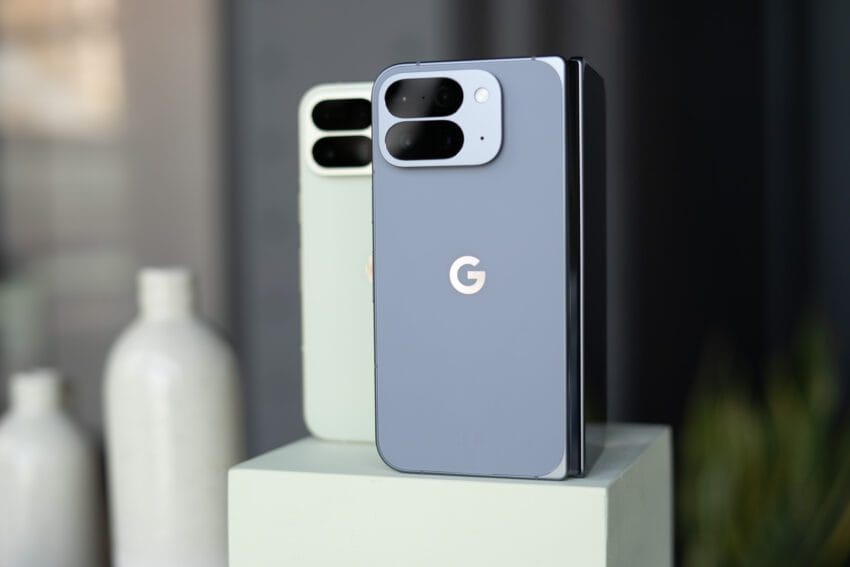
google says the quiet part out loud Google has openly acknowledged that the IP68 water and dust resistance ratings for its devices do not guarantee long-term protection.
google says the quiet part out loud
Understanding IP68 Ratings
The IP68 rating is a standard set by the International Electrotechnical Commission (IEC) under the IEC standard 60529. This rating indicates that a device is designed to be dust-tight and can withstand immersion in water beyond one meter for a specified duration. However, Google’s recent admission sheds light on the limitations of this rating, emphasizing that no phone is truly waterproof or dustproof. This revelation is particularly significant in an era where consumers increasingly rely on their devices for everyday tasks, often in environments where exposure to water and dust is a concern.
The Technical Aspects of IP68
The “IP” in IP68 stands for “Ingress Protection,” which is a classification system that rates the effectiveness of a device’s protective features against solid and liquid intrusions. The first digit, “6,” signifies that the device is completely dust-tight, while the second digit, “8,” indicates that it can withstand immersion in water beyond one meter, typically for up to 30 minutes. However, this does not mean that the device will remain impervious to water or dust indefinitely. Google’s statement serves as a reminder that these ratings are not absolute guarantees.
The Reality of Device Protection
Google’s statement highlights a crucial aspect of device longevity: the seals and protective measures that provide water and dust resistance can degrade over time. Factors contributing to this degradation include:
- Environmental Exposure: Regular exposure to elements such as saltwater, chlorine, or even dust can compromise the integrity of a device’s seals. For instance, using a phone at the beach or in a swimming pool can lead to corrosion or wear that diminishes its protective capabilities.
- Physical Damage: Drops, dents, and cracks can create vulnerabilities in a device, allowing moisture and dust to infiltrate. A seemingly minor drop can result in micro-cracks that are not immediately visible but can significantly affect the device’s resistance over time.
- Wear and Tear: Over time, the materials used in seals can wear down, reducing their effectiveness. Regular usage, combined with exposure to various elements, can lead to a gradual decline in the protective features of a device.
Google’s proactive communication about these limitations is noteworthy. It is common for manufacturers to include disclaimers about water and dust resistance in their documentation, but few have been as explicit in their marketing materials as Google has been. This level of transparency is crucial for setting realistic consumer expectations and fostering responsible usage of devices.
Implications for Consumers
This revelation has significant implications for consumers who often rely on the IP68 rating as a selling point when purchasing smartphones. Many users may assume that their devices are impervious to water and dust, leading to careless handling and potential damage. Understanding the limitations of these ratings can help consumers make more informed decisions regarding the care and maintenance of their devices.
Warranty Considerations
Another critical aspect of Google’s announcement pertains to warranty coverage. The fine print in Google’s advertising materials states that if a device is found to have water damage, it is considered proof of user negligence, voiding the warranty. This is a common practice among manufacturers, yet many consumers may not be fully aware of the implications.
For instance, if a user accidentally drops their phone in a pool, they may assume that the IP68 rating will protect their device. However, if the manufacturer determines that the damage occurred due to user error, the warranty will not cover the repair costs. This lack of coverage can lead to unexpected expenses for consumers, particularly if they are not aware of the stipulations surrounding their device’s warranty.
Industry Reactions
The tech industry has reacted to Google’s candidness with a mix of surprise and appreciation. Many industry experts believe that this level of transparency is essential for building trust with consumers. By acknowledging the limitations of water and dust resistance, Google is encouraging users to take better care of their devices. This approach could set a new standard for how tech companies communicate about product capabilities and limitations.
Consumer Advocacy Groups
Consumer advocacy groups have also weighed in on the matter. They argue that while it is commendable for Google to be transparent, manufacturers should take additional steps to educate consumers about the realities of device protection. This includes providing clear guidelines on how to maintain water and dust resistance over time.
Moreover, these groups emphasize the importance of consumer education regarding warranties. Many consumers may not fully understand the terms and conditions associated with their devices, leading to confusion and frustration when claims are denied. Advocacy groups suggest that manufacturers should include more straightforward language in their documentation and marketing materials to clarify these issues.
Comparative Analysis with Other Manufacturers
Google’s approach stands in contrast to that of other smartphone manufacturers. While many companies include disclaimers about water and dust resistance in their documentation, few have made such explicit statements in their marketing materials. For example, Apple and Samsung, both of which offer devices with IP68 ratings, have not publicly acknowledged the limitations of these ratings to the same extent as Google.
This difference in communication strategies raises questions about industry standards and practices. Some experts argue that a more transparent approach could benefit the entire industry by fostering consumer trust and encouraging responsible device usage. If other manufacturers follow Google’s lead, it could lead to a shift in how consumers perceive and interact with their devices.
Consumer Expectations
Consumer expectations regarding device protection have evolved over the years. As smartphones have become more integrated into daily life, users have come to expect a certain level of durability and resistance to environmental factors. However, this expectation may not align with the reality of device performance.
With Google’s recent admission, consumers may need to recalibrate their expectations and adopt more cautious behaviors when using their devices. This includes avoiding exposure to extreme conditions and being mindful of potential hazards that could compromise the integrity of their devices. For example, users may want to invest in protective cases or screen protectors that can help mitigate risks associated with drops or exposure to liquids.
Future Implications for Device Design
Google’s candidness may also influence future device design and marketing strategies across the industry. As consumers become more aware of the limitations of water and dust resistance, manufacturers may need to prioritize durability and longevity in their designs. This could lead to innovations in materials and construction techniques aimed at enhancing device protection.
Potential Innovations
Some potential innovations that could arise from this shift in consumer expectations include:
- Advanced Sealants: Development of new materials that offer improved resistance to wear and tear, extending the lifespan of protective seals. These materials could be designed to withstand harsh environmental conditions without compromising their effectiveness.
- Self-Healing Materials: Research into materials that can repair themselves when damaged, maintaining their protective qualities over time. This could revolutionize how devices are constructed, potentially reducing the need for repairs.
- Enhanced User Education: Manufacturers may invest in educational campaigns to inform consumers about best practices for maintaining device protection. This could include tutorials, videos, and interactive content that helps users understand how to care for their devices properly.
Conclusion
Google’s recent acknowledgment regarding the limitations of IP68 ratings marks a significant moment in the tech industry. By openly discussing the realities of water and dust resistance, Google is not only setting a precedent for transparency but also encouraging consumers to take better care of their devices. As the industry evolves, it will be interesting to see how other manufacturers respond to this shift and whether it leads to innovations in device protection.
Ultimately, consumers must remain vigilant and informed about the capabilities and limitations of their devices. Understanding that no phone is entirely waterproof or dustproof can help users make better decisions and prolong the life of their smartphones. As technology continues to advance, the dialogue around device protection will likely evolve, prompting both manufacturers and consumers to adapt to new realities.
Source: Original report
Was this helpful?
Last Modified: September 6, 2025 at 3:58 am
3 views















